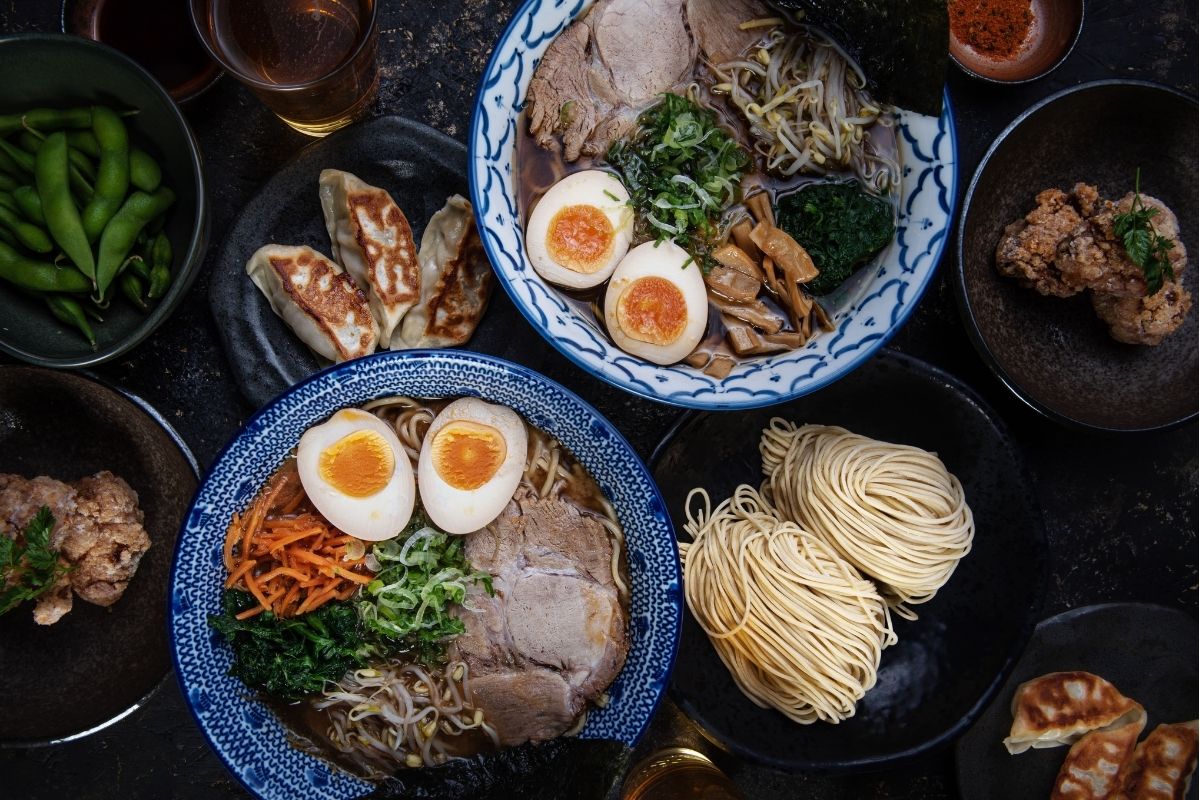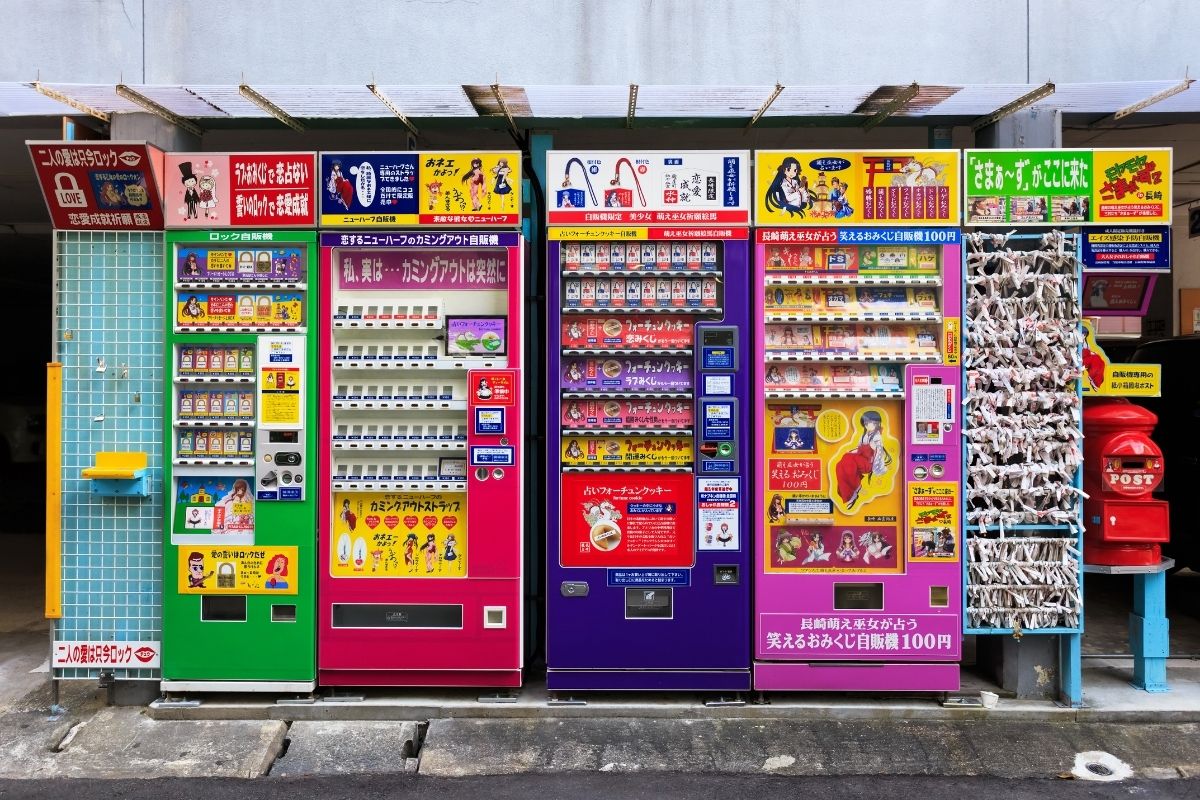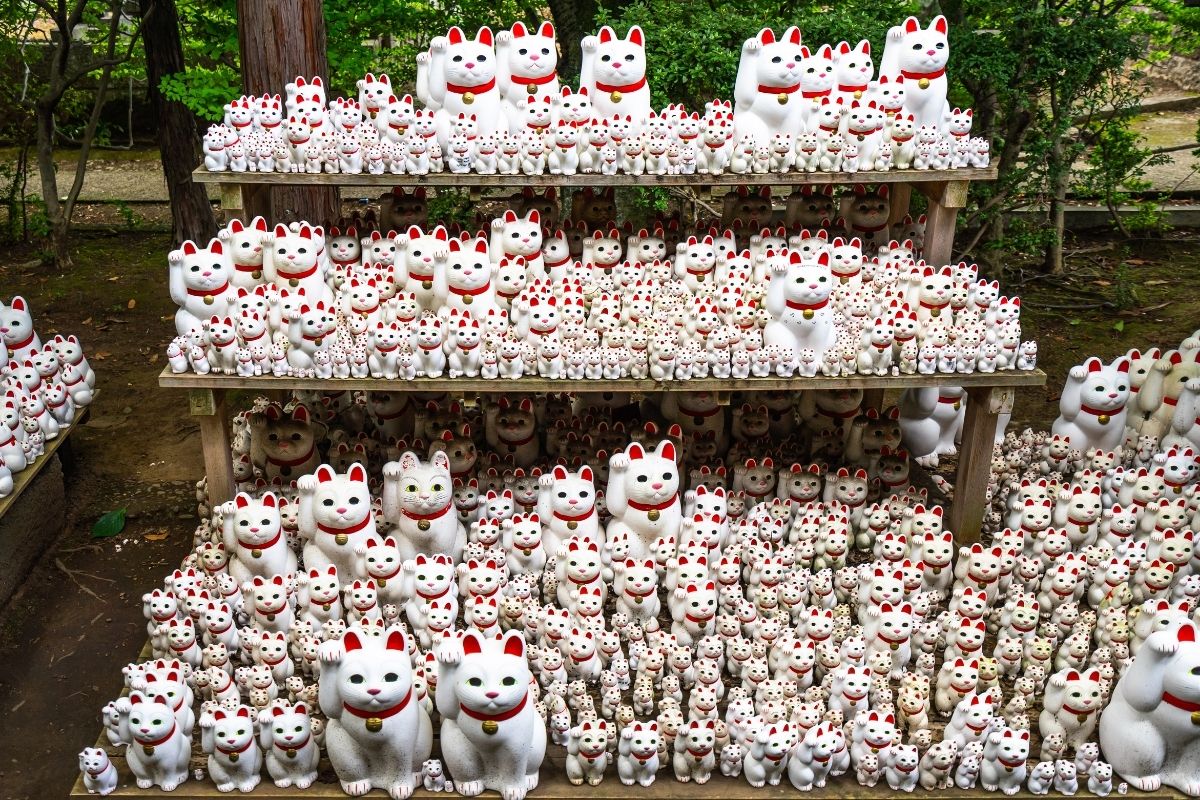
THE RAMEN MAP: A JAPANESE ITINERARY
Ramen is one of the best-known recipes of oriental cuisine , a classic dish of the Japanese tradition in the collective imagination. Originally from China, it is now a national dish in all provinces of Japan, where each locality offers its own variant.

Illustration of a traditional ramen in Ukiyo-e Style © JoyImage
A specialty that is served in starred restaurants - of which Tokyo is the city with the highest absolute number in the world - as well as in local streetfood kiosks. In Japan there are over 80,000 Ramen Bars and in the capital alone, on average, a new one is opened every day.

A view of the OmoideYokocho neighborhood, an area renowned for Street Food in Tokyo © Yulia Grigoryeva
If in recent years it has been sushi that has been proposed and exported all over the world, ramen was the dish that had already brought about a revolution in fusion cuisines in the last years of the last century, becoming a true cultural icon of the Land of the Rising Sun. . A country whose cuisine is protected by UNESCO as an Intangible Cultural Heritage.
Ramen is the result of a complexity where two fundamental ingredients such as time and love meet many raw materials, for a one-of-a-kind explosion of taste, Umami. Umami is the fifth flavor , the fifth dimension of taste: after sweet, salty, sour and bitter. The good , which includes these four

An illustrated map of Japan © HstrongART
So here is the map of ramen in Japan , a unique journey between islands and regions, prefectures and districts.
HOKKAIDO
Hokkaido: Asahikawa , Sapporo and Hakodate , the so-called regional “Big Three”; Kushiro , the "number four" of the territory, with a marine character given the local fishing industry in the city; Muroran Curry , with sweet and sour soup and wavy noodles.
TOHOKU
Aomori: Hachinohe , contains local ingredients, chicken and anchovies; Tsugaru , with homemade noodles.
Iwate: Kamaishi , with rather thin noodles and clear broth; Ofunato Pike , with pike meat.
Akita: Jumonji , with uniquely textured noodles prepared in unsalted water.
Miyagi: Sendai Miso , with the spicy taste balance of spices, soy and miso.
Yamagata: Torimotsu , made with chicken and served in a single dish; Sakata , with handmade ramen and many types of fish inside; Chilled , served cold also for the summer season; Yonezawa , with beef.
Fukushima: Kitakata , one of the so-called “Big Three”; Shirakawa , with mixed meats and light soy broth.
KANTO
Tokyo: Hachioji , one of the most recommended, often served with chopped onion on top.
Kanagawa: KanagawaSanma-men , with beans and bean sprouts.
Chiba: Funabashi Sauce , contains ginger, soy, seaweed and cabbage; Katsuura-style Tantan-men , an unmissable variant with seafood; Takeoka-style , one of the rarest, with dried noodles and leek instead of onion.
Saitama: Stamina , very economical and nutritious thanks to pork, chives and onions.
Ibaraki: Tofu Miso , almost a "brother" of the famous miso soup; Stamina , often contains unusual ingredients such as liver or pumpkin; Mitohan , historical dish with lotus roots and the famous "five spices".
Tochigi: Healthy , made with fine noodles, roasted pork and spring onion.
Gunma: Joshu-fujioka , with light soy sauce broth.

One of the dishes at TENOHA Ramen in Milan © TENOHA Milan by Anna Daverio
CHUBU
Yamanashi: Hoto , with stewed vegetables.
Nagano: Anyoji , with local noodles and the addition of sesame seeds and sauce; Romen , with the yakisoba-style variant and a seasoning that includes garlic, the "seven spices", vinegar and sesame oil.
Niigata: Tsubame-sanjo , a “fatty” specialty with lard topping; Nagaoka-kei , with strong ginger aroma.
Toyama: Toyama Black , characterized by a black color given the high concentration of soy sauce.
Fukui: Tsuruga , traditional variant with pork bone broth, chicken and soy and topping of spring onion, bamboo and roasted pork.
Aichi: Taiwan , extremely spicy as all ingredients are stewed in chili pepper.
Gifu: Takayama , simple and delicious version with chicken and vegetables.
Shizuoka: Fujieda-asa , with green tea leaves to enjoy at any time.
KINKI
Osaka: Takaida , popular and simple with bamboo and meat.
Hyogo: Banshu , with a sweet and sour taste due to being cooked in a broth that includes apples and sugar.
Kyoto: Kyoto , the world's stereotype of ramen, with rich flavor and thick broth.
Shiga: Oumi Champon , extremely popular with chives, mushrooms, bonito, carrots and cabbage.
Nara: Tenri , with Chinese cabbage in large quantities.
Wakayama: Wakayama , very light, with soy sauce and pork bone broth.
Mie: Kameyama , with many types of rather rare mushrooms.
CHUGOKU
Okayama: Kasaoka , topped with local sauces and chicken.
Hiroshima: Onomichi , with unique features such as bits of pork fat and bamboo; Hiroshima, one of the variants with the most traditional, soft and light taste.
Tottori: Tottori Beef Bone , a unique dish with its beef bone broth and intense flavour.
Shimane: Shijimi , renowned for its translucent broth also thanks to the local waters used.
Yamaguchi: Ube , with pork bone broth and medium-cut noodles.

One of the dishes at TENOHA Ramen in Milan © TENOHA Milan by Anna Daverio
SHIKOKU
Ehime: Yawatahama , characterized by a golden broth.
Kagawa: Sanuki , with a strong and exquisite flavor.
Kochi: Nabeyaki , also sold in supermarkets, adds spring onion, chicken and raw eggs.
Tokushima: Tokushima , existing in three rather different varieties, associated with the colors brown, yellow and white.
KYUSHU
Fukuoka: Hakata , with “vermicelli” style ramen and pork bone broth; Nagahama , quick to prepare and with a high fat content; Kurume , with many varieties and very long-cooked concentrated broth.
Saga: Saga , with reduced salt and fat content.
Nagasaki: Nagasaki Champon , flagship of local cuisine, with meat and seafood.
Kumamoto: Tamana , with roasted garlic; Kumamoto , with garlic oil and several varieties of broth.
Miyazaki: Miyazaki , simple and light with a high percentage of water in the broth.
Kagoshima: Kagoshima , usually accompanied by pickled vegetables and tea.
OKINAWA
Okinawa: Okinawa soba , with tons of toppings and sauces.
Discover the new TENOHA RAMEN CLUB merch
TENOHA E-SHOP
the first Japanese concept store in Europe: online
LE CREUSET Japanese rice cooker - €225.00
Daruma tumbler (set of 2) - €39.00
KIKKOMAN - Teriyaki Marinade & Sauce - €5.00
Where Chefs Eat. The guide to chefs' favorite restaurants - €19.90











